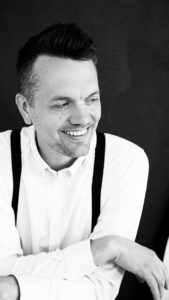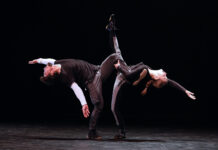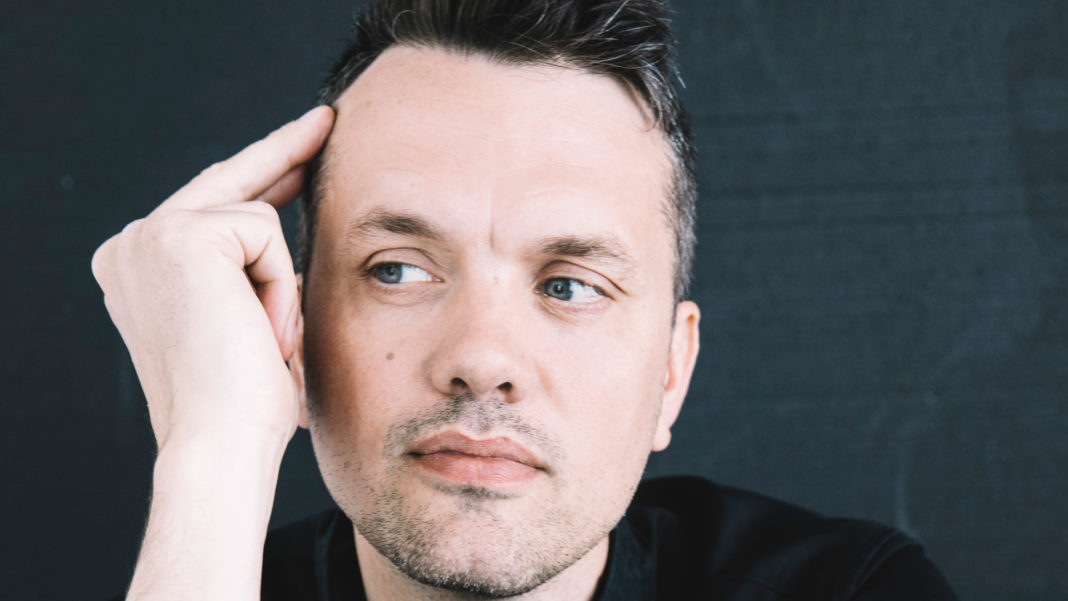“I had to do a bit of thinking on that and how to organize the orchestra in the space to have three conductors,” says Icelandic composer Daníel Bjarnason of From Space I saw Earth. That’s his new work that will have its world premiere on Thursday night at the LA Philharmonic Centennial Concert and Gala at Walt Disney Concert Hall.
The need for three conductors sprung from an idea the Philharmonic had to have former Music Directors Zubin Mehta and Esa-Pekka Salonen join Gustavo Dudamel to conduct the final piece of the concert.

Bjarnason is known to local audiences for his Violin Concerto, which had its premiere at the Hollywood Bowl in 2017. He also co-curated the Reykjavík Festival where some of his works were performed and he also conducted.
Speaking by phone from his home in Iceland, Bjarnason revealed he, too, had no idea how to make this work at first.
“Do they conduct at the same time? Do they see each other? Are they independent of each other?,” he asked himself. But he did find a solution.
“In the end I found a solution with what I have been doing with my music for awhile anyway, which is having the same material, but slightly shifted apart from each other and moving at different speeds. This can be on a big scale or a smaller scale to create the effect of reverb or delay, but it can also be an interesting thing harmonically to do. There’s an element of randomness so it will never be the same twice. I like that aspect of it.”
Bjarnason won’t hear what From Space I saw Earth sounds like fully until today’s rehearsal.
“We are doing a dry run with the conductors and three pianos on Tuesday which is mostly for them to rehearse the coordination and how it works for them. The day before the concert we do it with the orchestra – which will be quite interesting. It might be a little confusing for the orchestra. They will see all three conductors but should only follow one of them. It will be a bit of an experiment and we’ll see what we might need to improvise in the rehearsal to make it work. That’s part of the excitement.”
Conceptually this work is about the view astronauts have from space. Since no two astronauts have the same point-of-view after returning, perhaps that was part of the inspiration Bjarnason called on in composing this.
“Exactly. It is sort of how we can cherish the same thing, but in different ways. I’ve been quite fascinated by space travel. The cognitive shift or sort of moment of truth where these people who have been in space and look at earth as this one system. It makes sense and you understand it intellectually, but experiencing it for real in outer space, I think that leaves a strong impression on people.”

Bjarnason, who doesn’t want to be too specific about the intent of From Space I saw Earth, but does feel it isn’t just about time spent in space.
“It’s also, maybe, a way of commenting on what’s happening in the world – that we need global solutions. We need to think about the earth as a system.
Beyond earth as an eco-system, he also addresses parallels between the space race of the 60s to what’s going on in the world today.
“I think it is just amazing to witness how quickly things can change and how quickly they can slide back to something you thought would never reoccur. I think that’s a good lesson for everybody to read the history and know what happens when you have certain powers at play and certain people in positions of power and certain movements unchecked. There are a lot of red flags at the moment I would say, especially concerning Russia.”
If anyone is looking for a volunteer to go to space in the future, you need look no further than Bjarnason.
“Oh yeah, absolutely. It’s a little bit daunting, but I think it would be such an opportunity to experience that.”
Daunting and hard. As President Kennedy explained was the exact reason to want to put a man on the moon.
It’s a lesson Bjarnason thinks we can still learn from today.
“I think that’s essential. Of course, Kennedy was not perfect, but at least he was a leader who united people and they rallied behind a certain idea. Having strong leaders can both be a force for good and evil. Hopefully we can upgrade our political system – this goes for most countries, not just America, we could also do with an upgrade here in Iceland – so we’re able to develop a better way and move forward in a more positive and enlightened way then we seem to be doing at the present.”
All photos by Saga Sig/Courtesy of Harrison Parrott











